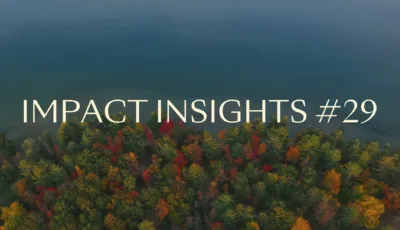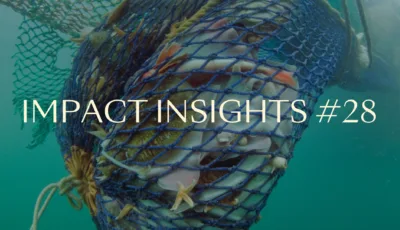What computer science can teach us about decision-making in business
According to neuroscientists, we make about 35 000 small and big decisions every day*. In business, we collectively make decisions that are sometimes widely important – but how do we know whether those decisions are as good as they should be? To improve our decision-making, we could draw parallels with the branches of science that deal with optimization challenges.
Meet the nerd
In my daily life I work at Norselab, a co-founder of meaningful technology companies based out of Oslo, Norway, where I strive to bring a little bit of my science-based nerdyness into pretty much everything we do. Ask my colleagues and they will show no surprise that I draw parallels between science and business.
At Norselab we are particularly attached to diversity as a superpower for success in business. There is already a great amount of research that supports the idea that diversity improves decision-making. During my career, I've spent some time studying what we call “the optimization problem” in computer science and I believe that it can teach us some useful lessons about diversity and decision-making in a team.
How science solves decision and optimization problems
In mathematics and computer science, decision problems are the kind of problems that require that you answer a simple "yes" or "no" based on a great amount of inputs. Decision problems can be mapped into larger sets to form what we call optimization problems. These problems deal with finding the very best solution - all possible solutions taken into consideration.
Now, stick with me for another minute. We’re getting there.An archetypal example of an optimization problem is what we call the “global extrema”: it’s about finding the maximum or minimum value on a complex surface. To illustrate this, here is a graph representing a complex surface in 3D created in a Jupyter notebook (obviously, as a nerd, I find it more comforting to use Python to write a blog than a text editor...).
Finding the maxima means detecting the highest mountain and finding the minima means identifying the lowest point on the surface. On Earth, the answer to the maximum “problem” would be Mount Everest.
(By the way, it is only in 2010 that Nepal on China agreed on the height of the tallest mountain, which is now established at 8,848 m, while the rock height of Everest is 8,844 m. But I digress...)
Studying my 3D surface, how would you find out that Mount Everest is the highest mountain? Or, in the example below, how could you verify that the red peak in the map is actually Mount Everest?
Creating a recipe for optimization
When solving problems like this, we wish to create an algorithm – or a "recipe" if you want – allowing us to identify the tallest mountain every time we are confronted with this challenge.
But if the information at your disposal was incomplete, how would you create that "recipe"? Take a look at the 3D-model again. A simple solution that many would go with, is to simply start anywhere and always go uphill from where they are at any time. However, if you were on the right-hand side of the surface of my 3D model for example, you would only reach the blue peak. This means that once you get up there, you discover that you need to go back downhill and all the way through the “valley” before you could start climbing the peak that you just now identified as the highest one.
How could you avoid going on this exhausting hike, only to discover that you are merely on the second highest mountain? A solution to this is to begin by exploring all possible starting points. You need to scan the whole range of possibilities by selecting as many different starting points as you can. Only this will offer the necessary variety in perspectives to discover which mountain is truly the highest.
So what does this mean in a business setting?
Diversity is a decision-making superpower
When considering the way optimization problems are solved in computer science and translate this into a business context, we learn a few things about how to systematically improve decisions.
I’m sure that by now you’ve probably understood that the highest mountain - Mount Everest - represent the best solution to a problem. If we wish to identify the optimal solution to any problem, we cannot limit our exploration to a few starting points. We need to collect insights from as many perspectives and viewpoints as possible to explore the entire array of solutions.
How does that work in practice? The short answer is that we need to foster independent thinking. But we need to dig deeper. Our example from computer science teaches us that we need to work systematically to allow employees to think independently and out of the box - and fight groupthink. The better we are at that, the wider the variety in perspectives, and the better the decision-making.
This is where diversity comes into play.
I mentioned earlier that “Embracing Diversity” is something we are particularly attached to at Norselab. So much that we even enshrined it into our “People Philosophy”, where we talk about the 5 elements we believe to be decisive for a strong, winning company culture.
#1 Resolute Openness
#2 Embracing Diversity
#3 Purposeful Focus
#4 Attitude: The Bedrock of Performance
#5 Merits, not Politics
When talking about diversity specifically, it is generally accepted that diversity in terms of generations, cultures and gender is necessary. But there is a less known dimension of diversity, cognitive diversity, that has only just started to gain awareness.
Cognitive diversity is tough to build
Culture, gender or age does not necessarily correlate with how a person processes and responds to information. Cognitive diversity can be defined as differences in perspectives or “information processing styles”. In the context of the example we used earlier in this article, this type of diversity would not only offer a greater span in perspectives and starting points, but also different ways to reach the top of Mount Everest (i.e. different ways to solve the problem, different ways to build the algorithm).
Cognitive diversity has only been highlighted more recently. Serious research suggests that teams with diverse cognitive approaches – in addition to diverse demographics - perform significantly better than more cognitively homogeneous teams. However, cognitive diversity would not work under any condition. To reap the benefits, it’s essential that the team aligns on core values, and that the setup allows for independent thinking.
As noted by Sara Canaday in a recent article in Psychology Today: “A culture that encourages (explicitly or implicitly) conformity of thought breeds stagnation and imperils a company.” Taking this into consideration also shows the importance of avoiding the common pitfall of recruiting “in your own image”. This is a common phenomenon when it comes to gender, culture and age - the best known diversity factors - but it's even more usual when it comes to cognitive style, or ways of thinking.
Disagreement is healthy for your business
When everyone agrees on what to do about your problem, find someone who disagrees and cherish them.
These are not my words, but a quote proudly borrowed from authors Reynolds and Lewis. Disagreement is the price to pay to ensure that you consistently identify the right mountain to climb and the easiest route to get there. Adding cognitive diversity to the more common definition of diversity will give you powers you did not imagine you had. A more comprehensive way of defining diversity will allow you to thoroughly explore the range of possibilities – and empower your business to make better decisions, every time. Take it from a nerd.
*Brian Wansink and Jeffery Sobal from Cornell University concluded that we make over 220 decisions related to food alone, Mindless Eating: The 200 Daily Food Decisions We Overlook (May 1, 2006)
This article was written by Arnaud le Breton, former Tech Wiz at Norselab.


